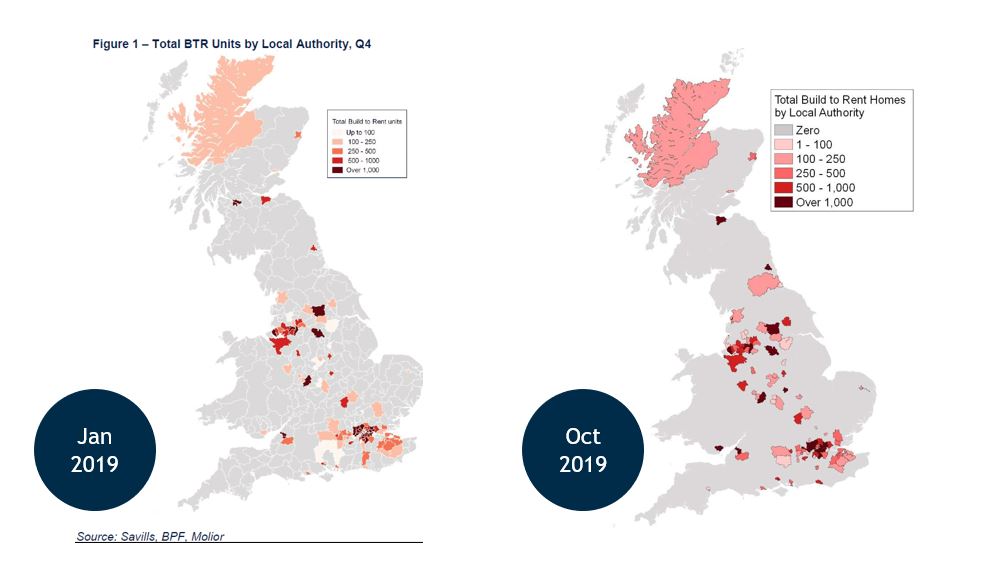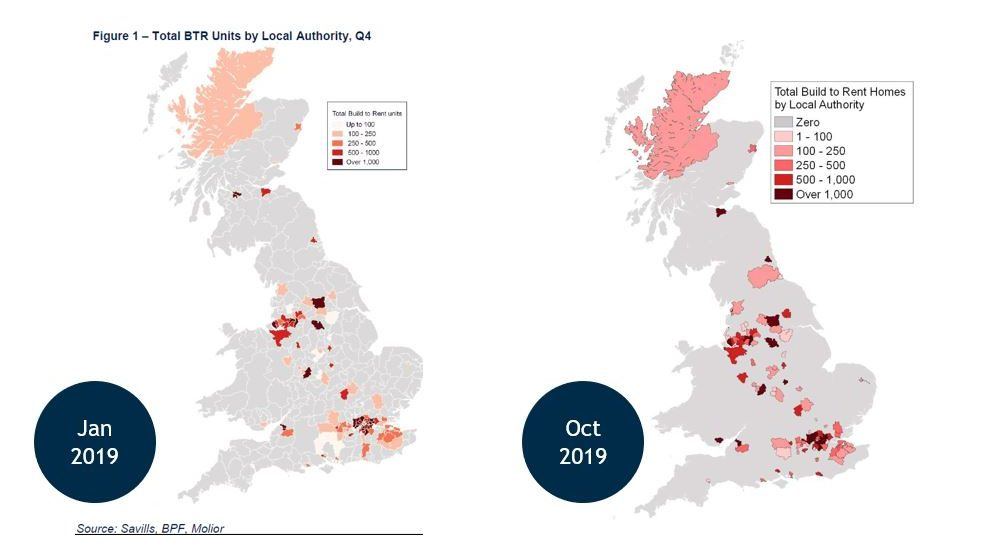Quality is just as important, if not more, in BTR
2020 marks four years from when Stace handed over the first purpose-built Build-to-Rent (BTR) development, for Quintain at Wembley Park, which is the largest single-site purpose-built BTR development in the UK.
Over those four years, the sector has continued to evolve.
We have been very much part of the emergence of BTR, developing itself from the private rented accommodation.
To date, we have been involved in the delivery of over 1,500 BTR homes for our clients and currently have multiple BTR developments in planning or under construction.
In the UK, according to the HomeOwners Alliance, there are 5 million rental accommodations in the UK. At the latest count, there are just over 152,000 BTR homes across the UK, including those in the pipeline.
So, although rapidly growing, BTR is only a very small fraction of the rental market offering.

Quality highest on the list for both renters and developers
As a more premium product, BTR developments provide an unrivalled level of quality. This is very much welcome for the market, who have been calling out for better rental homes.
Working with leading businesses in this newly emerged and fast-moving sector there is a common drive to improve the quality of rental accommodation and occupier experience in the UK.
A recent YouGov poll found 4 in 10 renters are stuck in cold damp properties that landlords refuse to repair. Additionally, 17% of renters are on short-term leases that excludes the ability to extend for the long-term.
With this key driver and developers predominantly holding on to their new assets, there is a greater emphasis placed on design and build quality utilising multi-service expertise, irrespective of where the developments are being built.
The top five aspects we have experienced on our BTR journey are:
General arrangements – Careful consideration needs to be applied at the outset to create balanced apartment units of equalised shape and size of rooms, as well as the quantity of bathrooms, to suit sharers.
With a greater quantity of turnover when compared to for sale residential accommodation, communal areas such as corridors and shapes of lift cars may need to be considered.
Increase in amenity provisions with an added wow factor – This is a big draw to attract and retain residents as the place to live with some schemes now including on-site sports and game facilities, communal dining experiences, and private gardens.
Additionally, in what is increasingly becoming a competitive market in London and other key cities, the quality of amenities is one USP.
Finishes consideration – High quality construction with greater deliberation placed on easy clean and low preventative maintenance materials while still retaining an expected level of luxury that matches the rent.
With this consideration, we have noticed a change in products and finishes, plus greater control enforced on the construction quality, handover and onboarding process.
Mechanical and electrical services – Common hotel-style services are being installed instead of unit apartment specific to retain ownership, maintenance and improve building efficiency.
This approach allows the added benefit of freeing up apartment space and ensuring hassle-free renting, which tenants are now expecting in BTR developments.
Technology hubs – While the apartment boiler may be OUT, smart-living and utilising IoT is very much IN and expected. Superfast broadband is a necessity.
Tenant’s now place a greater emphasis on integrated living technology to maximise modern-day occupier experience within the apartment and across the development.
In addition, the occupier landscape has changed.
Four years ago, the focus was very much on attracting 25-35-year-old professional workers. However, interest and sign-up has shown the demographic market to be much more diverse.
Some developments are going a step further to stand out and attract tenants, such as being ultra-pet friendly.
With developers retaining their assets, quality in design, construction and service are at the forefront in order to establish a strong BTR brand and create ‘the place to live’ developments.
Savills Q4 2019 data shows that London accounts for 50% of all completed BTR homes. I believe we’ll begin to see other key regional UK cities up their pace of delivery, with the focus on providing a better rental experience for tenants.

Mark Ashby, Partner
Mark is a Project Management Partner at Stace LLP.
About Stace
Stace is a leading, multidisciplinary construction and property consultancy delivering technical professional services across the UK. Our five core services are project management, cost management, building surveying, monitoring surveying, and health and safety.







